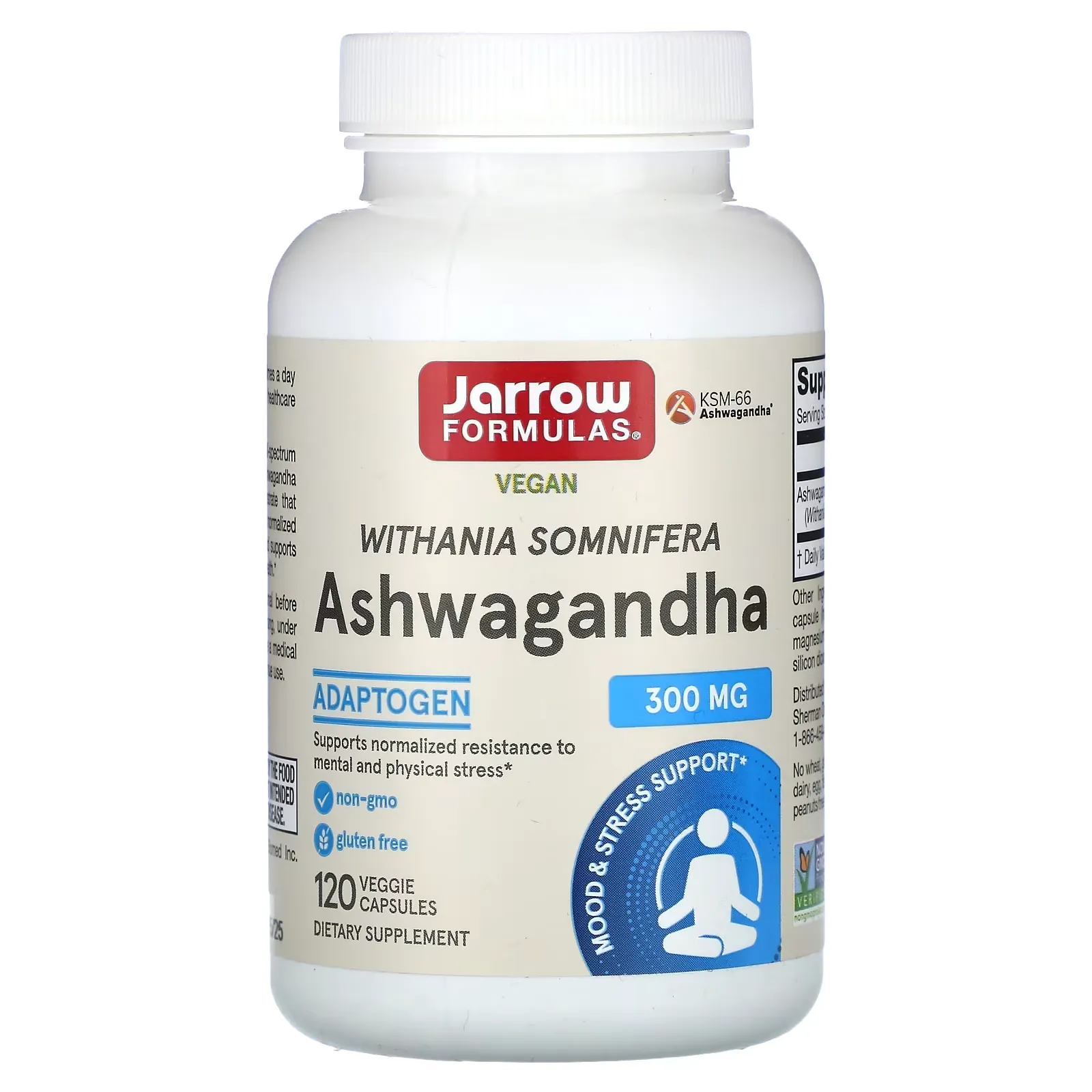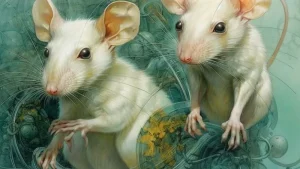Spoilers for this article
- ashwagandha (type of Indian cactus)(Withania somnifera)essencewas induced by propylthiouracil.thyroid glandIt was found to ameliorate growth plate and hippocampal damage in young rats with hypofunction.
- ashwagandha (type of Indian cactus)increases growth plate thickness and chondrocyte size,thyroid glandMay alleviate growth retardation due to hypofunction.
- In addition, theashwagandha (type of Indian cactus)improves the morphology and function of neurons in the hippocampus,thyroid glandMay alleviate cognitive decline due to hypofunction.
"How did you do it?thyroid glandCan you treat hypofunction naturally?"
."ashwagandha (type of Indian cactus)What is that? Does it really work?"
Can the results of this study be applied to humans?"
In this issue.ashwagandha (type of Indian cactus)andthyroid glandhypofunctionThis is the story of
thyroid glandThose who wish to improve hypofunction naturally,ashwagandha (type of Indian cactus)This article is a must read for anyone interested in the effects of
ashwagandha (type of Indian cactus)andthyroid glandThere have been other studies of hypofunction, such as this one.ashwagandha (type of Indian cactus)andGrowth plates and their effect on the hippocampusThere may be a few cases that confirm the
What is ashwagandha in the first place?

ashwagandha (type of Indian cactus)(scientific name: Withania somnifera Dunal) has been used for thousands of years in Ayurveda, the traditional medicine of India, to treat both physical and mental health problems.stressThe herb has been used as an effective medicine, tonic, and even aphrodisiac.
Nowadays, the effectiveness of these products has been proven by modern science through various clinical studies, and they are attracting attention.
The fruit is an evergreen shrub of the eggplant family. The name comes from the horse's (ashwa) smell (ganda).
Some say it is named after the robust vigor of horses.
▼Recommended Articles

Paper Outline
The paper presented in this issue ofAmeliorative Effect of Ashwagandha (Withania Somnifera) Extract on Hippocampal and Growth Plate Changes Associated with Propylthiouracil-Induced Hypothyroidism in Juvenile Rats(Japanese translation)". *PDF Attention
| (data) item | Contents |
|---|---|
| Title. | Ameliorating Effect of Ashwagandha (Withania Somnifera) Extract on Hippocampus and Growth Plate Changes Associated With Propylthiouracil Induced Hypothyroidism in Juvenile Rats |
| author (usu. of a particular book, etc.) | Ibrahim NA, Diab MSel DM, Hassan AA, Anwar HH, Ragab WM, Morsi EM, et al. |
| Magazines | Al-Kindy College Medical Journal |
| Year of Publication | 2023 |
Introduction.
What is Ashwagandha?
As noted above,ashwagandha (type of Indian cactus)(Withania somnifera) Overview ashwagandha (type of Indian cactus)is an herb traditionally used in Ayurvedic medicine and its antioxidant,anti-inflammatoryanti-stressThe effect is attracting attention.
What is Hypothyroidism?
thyroid glandHypofunction is athyroid glandDiseases that decrease hormone production and secretionand adversely affect physical growth and neurological function.
- thyroid glandhypofunction
-
thyroid glanddoes not produce enough hormones.
The disease can cause fatigue, weight gain, and depression.
Treatment,thyroid glandHormone substitutes are commonly administered.
Causes include autoimmune diseases, nutritional deficiencies, and trauma.
Purpose of the Study
Description of the background and purpose of the study
In this study,thyroid glandThe effects of hypofunction on the growth plate and hippocampus were investigated,ashwagandha (type of Indian cactus)The objective is to test whether the extracts ameliorate these effects.
The familiar "Let's use science to prove the efficacy of traditional medicine!"
- growth plate
-
Cartilage tissue responsible for bone growth.
It is located at both ends of the bone in children and young adults.
During growth, the growth plates actively divide cells and bones grow.
As adults, the growth plates close and bone growth ceases.
- hippocampus
-
In parts of the brain,Involved in memory formation and acquisition.
In particular, it is responsible for converting short-term memory into long-term memory.
It also has the ability to process spatial information, contributing to the recognition of one's location and surroundings.
research methods
Experimental Animals and Drugs Used
In this study, growing rats were used as experimental animals,thyroid glandAs a drug that causes hypofunctionPropylthiouracil (PTU)was administered.
In addition, theashwagandha (type of Indian cactus)Extracts were administered to the study group to assess efficacy.
- Propylthiouracil (PTU)
-
thyroid glandDrugs used in the treatment of hyperfunctioning diseases (such as Graves' disease).
This medicine,thyroid glandInhibits hormone production and reduces its levelsThis relieves symptoms by
However, theside effectIt is important to use the product exactly as directed by a physician because there are
Using this characteristic,thyroid glandSo you are intentionally causing hypofunction.
Protocols and Methodology Overview
In the study, rats divided into experimental and control groups were treated with PTUthyroid glandinduced hypofunction.
Afterwards,ashwagandha (type of Indian cactus)Histological examination and morphological evaluation of growth plates and hippocampus in the study group treated with the extract and in the control group not treated with the extractThe company has conducted a
- morphological evaluation
-
A method of studying the form and structure of an object or organism.
This evaluation involves observing and analyzing the morphological characteristics of cells, tissues, organs, and individuals to obtain information on function, development, and evolution.
Morphological evaluation is widely used in biology, medicine, geology, and other fields.
data analysis
Data were statistically analyzed to compare differences between groups.
To examine significant differences, a p-value < 0.05 was adopted as the criterion.
- significant difference
-
In statistics, differences between two groups are not the result of chance but actual differences.
Usually, a statistical hypothesis test is used to calculate the probability (p-value) that a difference will occur by chance.
If the p-value is less than a predetermined threshold (e.g., 0.05), the difference is considered significant.
Significant differences are used in medical research and the social sciences to confirm effects and associations.
findings
Growth plate changes
By administering PTUthyroid glandGrowth plate thickness was significantly reduced in rats with induced hypofunction.
However, theashwagandha (type of Indian cactus)In the study group that received the extract,Significant improvement in growth plate thickness compared to control groupThe first time the company was founded, it was a "new" company.
This is,ashwagandha (type of Indian cactus)may have a positive effect on bone growth and developmentThe results show that there is a
Hippocampal changes
thyroid glandIn hypofunctioning rats, the density of neurons in the hippocampus was reduced and structural abnormalities were observed.
ashwagandha (type of Indian cactus)In the study group that received the extract,Improved hippocampal neuron density and alleviated structural abnormalitiesThe first time the company was founded, it was a "new" company.
- Improvement of hippocampal neuron density
Improved hippocampal neuron density refers to an increased number or density of nerve cells (neurons) in the region of the brain called the hippocampus.
The hippocampus plays an important role in memory formation and acquisition.
- Mitigation of structural anomalies
It refers to the return to some degree of normality of an abnormality that has occurred in the shape or structure of an object or organism.
For example, fractures andarthritisIn the following section, when structural abnormalities are alleviated by treatment, pain and limitation of movement are expected to decrease and the patient's quality of life is expected to improve.
However, the extent to which alleviation of structural abnormalities is effective depends on the individual situation and treatment approach.
Effects of Ashwagandha
ashwagandha (type of Indian cactus)By extract administration,thyroid glandCaused by hypofunctionReduced growth plate thickness and reduced hippocampal neuron density improvedThe results of the survey showed that the
From these results, we can conclude thatashwagandha (type of Indian cactus)school (e.g. of ikebana)thyroid glandPotential to mitigate adverse effects associated with hypofunctionIt was suggested that the
Interpretation and Significance of the Study
Meaning and interpretation of results
This study,ashwagandha (type of Indian cactus)Extracts show beneficial effects on growth plate thickness and hippocampal neuron densityThe company clarified that
This also means that theashwagandha (type of Indian cactus)andthyroid glandPotential to alleviate adverse physical and neurological effects of hypofunctionThis suggests that there is a
Implications for Hypothyroidism Treatment
ashwagandha (type of Indian cactus)Extracts are,thyroid glandPromising as adjunctive therapy in the treatment of hypofunctionThe results of the study showed that the
In addition to conventional treatment methodsashwagandha (type of Indian cactus)by using,such as growth retardation and impaired neurological function.thyroid glandPossibility of reducing the negative effects of hypofunctionThere are
Possibility of Ashwagandha
ashwagandha (type of Indian cactus)isthyroid glandhypofunction as well as other neurological disorders andstressIt is also expected to be effective for related symptoms.
By future research,ashwagandha (type of Indian cactus)It is expected that further efficacy and indications for
Conclusion.
How was it? I would like to conclude by summarizing the contents of this article.
Summary of this article
- ashwagandha (type of Indian cactus)(Withania somnifera)essencewas induced by propylthiouracil.thyroid glandIt was found to ameliorate growth plate and hippocampal damage in young rats with hypofunction.
- ashwagandha (type of Indian cactus)increases growth plate thickness and chondrocyte size,thyroid glandMay alleviate growth retardation due to hypofunction.
- In addition, theashwagandha (type of Indian cactus)improves the morphology and function of neurons in the hippocampus,thyroid glandMay alleviate cognitive decline due to hypofunction.
In this study,ashwagandha (type of Indian cactus)andthyroid glandPromising effects on growth disturbances and hippocampal dysfunction associated with hypofunctionWe have found that the results indicate that the
By future research,ashwagandha (type of Indian cactus)If further effects and proper usage of thethyroid glandIt may create a new treatment option for patients with hypofunction.
That's all for this article. Thank you for reading to the end. See you soon.
Disclaimer
This site is primarily intended toashwagandha (type of Indian cactus)to provide information about the results of the study and not to provide medical advice.
It is not intended to diagnose, treat, or prevent any specific disease or condition.
Always follow professional advice when using the information on this site.
We also cannot be held responsible for any loss or damage that you may suffer as a result of acting on the basis of the information on this site.
Use of AI in Content Generation
This website uses AI-based automatic generation for some content.
The information generated by this automatic generation is checked against actual references and articles, and great care is taken to ensure accuracy and reliability.
It is also intended to enhance the transparency and credibility of this site by appropriately disclosing content created through automatic generation.
We believe that this site can provide richer and more useful content through automation and AI-based content creation, which will enable us to provide information more quickly and accurately.




